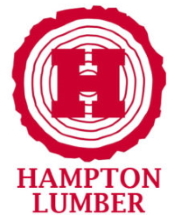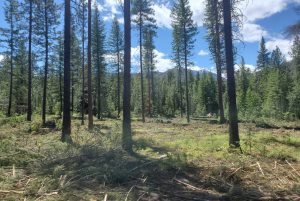Mission Restoration Project Underway to Increase Ecological Health and Resiliency in the Okanogan-Wenatchee National Forest

Washington’s federal forests are experiencing uncharacteristic and catastrophic wildfire, insect and disease epidemics, drought, climate-related warming conditions, habitat loss, and hydrologic events. Stewardship projects like the U.S. Forest Service’s Mission Restoration Project in the Okanogan-Wenatchee National Forest aim to restore forest vegetation to historical conditions and improve overall ecosystem health and resiliency to insect, disease, and wildfire events. The Mission Restoration stewardship project includes 50,200 acres southwest of Twisp, WA, primarily in the Libby Creek and Buttermilk Creek watersheds in the Methow River Basin.
“Fire exclusion over the past 100 years has allowed forest fuels to build-up to unmanageable levels,” says Lloyd McGee, Washington Forests Program Manager for The Nature Conservancy. “Proper vegetation and fuels management will return these uncharacteristic wildfires back to a more manageable level and allow the good effects that fire provides to co-exist with our communities, and that is a vital part of what the Mission Project will accomplish.”
The project—developed and designed over a four-year period with extensive environmental review—will begin this spring with commercial and non-commercial thinning, prescribed fire, road construction and decommissioning, culvert and bridge replacement, beaver habitat enhancement, and limited rock armoring and soil restoration. When complete, this project will improve forest resilience, and create access roads for forest management, fire suppression, and recreation for nearby communities. It will also improve habitat and recreational opportunities while creating local jobs and wood products.
Hampton Lumber, a fourth-generation, family-owned company, was selected to lead the commercial thinning on 1,522 acres to restore dense, overcrowded forests and allow understory wildlife forage growth. Variable retention harvesting will take place on another 244 acres to reduce conifer density. Some pulp logs and sub-merchantable material will be removed to reduce fuel loads in the forest. Most of the wood harvested will travel over the pass to Hampton’s lumber mill in Darrington, WA to be processed into lumber. Altogether, timber harvest will take place on just four percent of the total planning area, the proceeds from which will pay for many other elements of the project’s restoration work, including road decommissioning to restore hydrologic function, non-commercial thinning, stream enhancement, tree planting and prescribed fire.
“This is important work and we take it very seriously,” says Kris McCall, Hampton forester and Timber Sale Administrator for the project. McCall joined the U.S. Forest Service for an online community meeting in April to ensure that stakeholders, including local residents, are engaged and up to date on how the project is progressing. “We want people to be comfortable with what we’re doing out there,” said McCall. “We want them to know that protecting water quality and the safety of those who live around the project area is a top priority for us.”
The project has strong support from local fire ecologists and the North Central Washington (NCW) Forest Health Collaborative, which includes local conservation groups, timber industry members, tribal government, elected officials, and local, state and federal land managers. Crystal Elliot-Perez, Washington State Habitat Director for Trout Unlimited, wholeheartedly supports the project’s science-based approach for improving ecosystem health. She says, “We have invested hundreds of staff hours and leveraged hundreds of thousands of dollars to implement aquatic habitat restoration elements of the Mission Project, because of the benefits they provide threatened and endangered salmon and steelhead in the Methow River sub-basin.”
“Stewardship projects are a win-win for the environment and the surrounding communities,” said Tim Johnson, manager of Hampton’s sawmill in Darrington. “We need to reduce fuel loads in these forests and we have infrastructure nearby to create wood products from some of this material.” According to Johnson, nothing is wasted in Hampton’s manufacturing process. What doesn’t become lumber is used for pulp, paper, and particleboard manufacturing or processed through Hampton’s cogeneration system (producing heat and electricity simultaneously) to create renewable energy that’s fed back to the public utility. “These projects are about good stewardship and sustainability and local sawmills have an important role to play in making them successful.”
Project implementation began in May 2022. Hampton recently launched a webpage to keep stakeholders informed and provide updates on the project’s progress.
Contact:
Kristin Rasmussen – Hampton Lumber – kristinrasmussen@hamptonlumber.com
Source: Hampton Resources, Inc.


